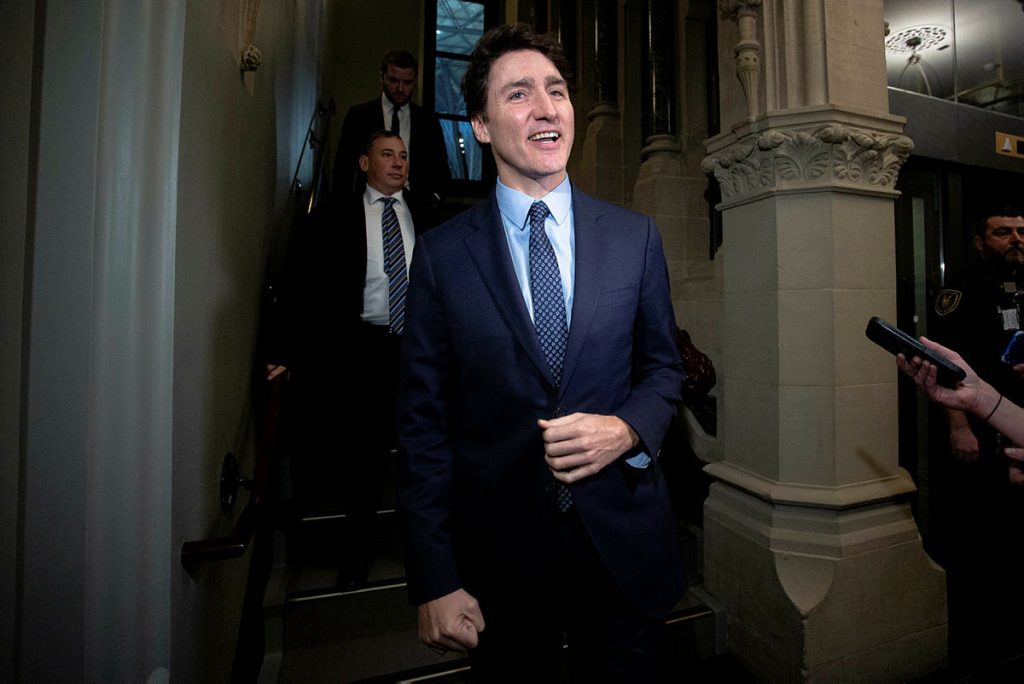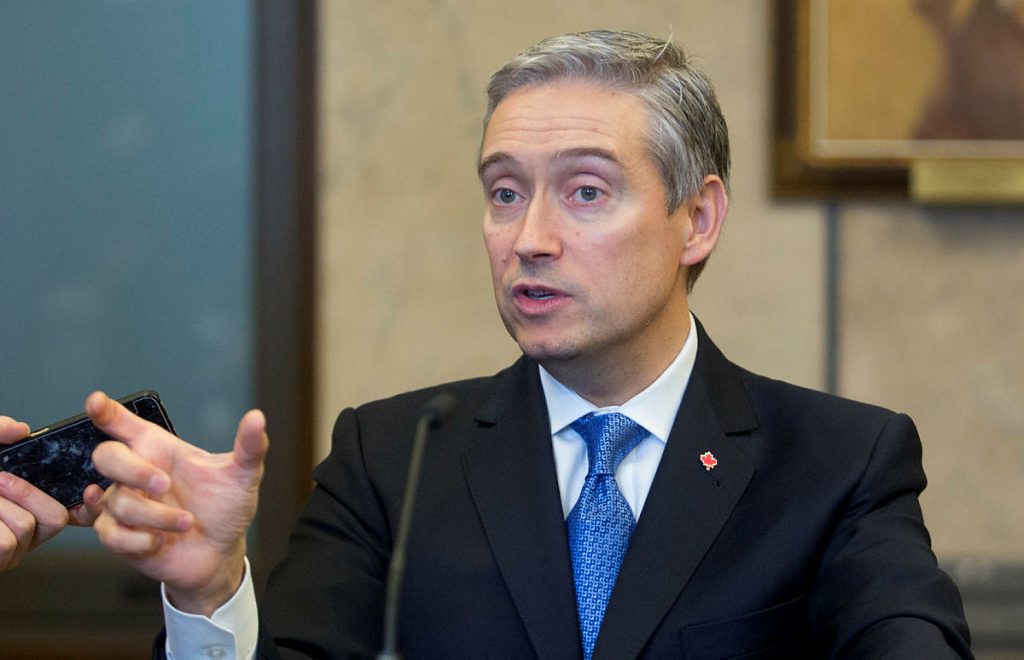Following Justin Trudeau’s exit as party leader and prime minister, Prime Minister Mark Carney has reoriented the Liberal Party, steering it from the left toward the centre-right, a move that caucus members describe as a reflection of Canadians’ evolving views, and something that they are still processing as to what it means for the party going forward.
“Everyone is progressive until they can’t pay the bills,” said one Liberal MP in an interview with The Hill Times. “If people start losing jobs and you’re progressive, your first priority is not going to be saving the wildlife. It’s going to be putting food in the fridge.”
The MP said that when Trudeau brought the Liberals back to power in 2015 after a 10-year hiatus, the cost of living was not a major concern for most Canadians. So, Trudeau built his brand as the champion of social policies like women’s rights, the environment, and the rights of Indigenous Peoples and other minorities, among others. But with the current shifting economic realities—marked by a persistent affordability crisis and the ripple effects of the trade war with the United States—the public’s focus has turned sharply toward the state of the economy.
As a result of an enormous amount of spending that occurred mostly during the COVID-19 pandemic, the Trudeau Liberals struggled with surging inflation, and a rising cost of living—challenges that left the government trailing Pierre Poilievre’s Conservatives for more than 18 months between 2023 and 2024. Poilievre capitalized on the public discontent, making affordability a central theme of his leadership campaign in 2022, and later using it to rally opposition against Trudeau.
The Liberal government’s failure to address the economic crisis left it increasingly vulnerable. By early this year, the party was projected to end up in third or fourth place in an election. That looming electoral collapse and Trudeau’s unpopularity sparked a wave of self-preservation within the Liberal caucus, ultimately leading to the then-leader’s ouster as prime minister.
The situation started to improve after Trudeau announced his exit plans. Another key factor behind the Liberal Party’s resurgence in popularity was the trade war triggered by U.S. President Donald Trump, impacting an economic relationship worth nearly $1-trillion each year between the two countries. Carney’s entry into the Liberal leadership race further boosted the party’s momentum, as voters viewed his strong background in finance as an asset in negotiating with Trump.

Liberal MPs told The Hill Times that when the House adjourned for the summer in June, they started to get a sense that the government is shifting its focus from social programs to economic development. But Finance Minister François-Philippe Champagne’s (Saint-Maurice—Champlain, Que.) recent instructions to cabinet ministers for “ambitious savings proposals” to cut operational costs of the government confirmed to them that the party is no longer a centrist one, but a right-of-centre party. Champagne’s July 7 letter states that the government is aiming to cut the day-to-day costs of running the government by 7.5 per cent for 2026-2027, 10 per cent in 2027-28, and 15 per cent in 2028-29.
In June, the government rushed C-5, the One Canadian Economy Act, through Parliament, which will allow the federal government to fast-track projects that are deemed in the national interest. To minimize the negatives effects of the trade war with the U.S., this law could be used to build pipelines or other resource-related initiatives.
Indigenous communities have raised objections about a lack of consultation with them on this legislation, but the government is moving forward, citing the need to boost economic growth and be less reliant on a trade relationship with America. The Carney government is organizing a series of meetings with Indigenous rights holders this summer to discuss the new legislation. One such meeting, which the government called the “First Nations Major Projects Summit,” took place in Gatineau, Que., on July 17.
Liberal MPs interviewed for this article said that their assessment is that most of the Liberal caucus—including the class of 2025—are left of centre and are still coming to terms with the party’s recent ideological shift to the right. They said the upcoming Sept. 9-12 national summer caucus retreat in Edmonton will offer a clearer picture of how MPs are responding to this shift. It will be the first caucus gathering since the parliamentary recess began in June. At the retreat, MPs are expected to share feedback from their constituents on the government’s new policies and their performance so far.
“It’s still new,” said a second MP. “So, it just means people are not fully adjusted, and they’re still waiting to see what is emerging. What’s emerged so far is not yet fully clear.”
Liberal MPs told The Hill Times that the women’s caucus, the Indigenous caucus, and the rural caucus will meet on Sept. 9; the regional caucuses and the national caucus will meet Sept. 10; and the national caucus will hold another meeting and an event on Sept. 11. MPs had not received a detailed agenda of the meeting last week.
Paul Thomas, a professor emeritus at the University of Manitoba, said that the Liberal Party’s transition from a progressive to a centre-right party shows its flexibility in policy terms to adjust to changing circumstances, and this shows why this is one of the most successful political parties in the world. In the previous century, the Liberals were in power for 69 years; and in this current century, the party has run the country for 16 years so far.
Thomas said that Carney has left behind Trudeau’s focus on identity politics, and that the current prime minister is more focused on making government more efficient and affordable.
The size of the civil service and increases in public spending went up dramatically under Trudeau, and now is the time to bring the fiscal situation under control, according to Thomas, who also said that the Carney government’s repositioning is good for electoral reasons but, at the same time, every government has to put its fiscal house in order.
“Fiscal discipline is at the heart and soul of this government,” said Thomas. “You can accept deficits for some extended period of time, and debt can build up, but at some point, carrying all that debt, especially if inflation rises, you’re in real trouble. I mean, you can’t have endless accumulation of debt.”

Greg Lyle, president of Innovative Research Group, said that Carney’s shift in focus reflects growing public sentiment. He said that many across the political spectrum—on both the left and the right—believe Carney is better positioned than Poilievre to handle the ongoing trade war with the U.S. He added that the Trump factor also played a significant role in drawing NDP supporters toward the Liberals.
However, Lyle cautioned that it remains to be seen how the political landscape will evolve once the trade dispute is resolved or Trump doesn’t have the same influence in the U.S. that he has now. In that scenario, he said, the Liberals will be vulnerable to the Bloc Québécois in Quebec, and the NDP in the rest of the country.
“This current coalition [that won the Liberals a fourth mandate] has a best-before date, and there’s a big question about what happens after they pass that date,” said Lyle.
“It’s the end of the Trump administration, and maybe sooner. So, essentially when Donald Trump ends up losing influence over the direction of American politics—which could happen before the end of his term—at that point, then the centre-left is going to become very vulnerable for the Liberals.”
Lyle described the Trudeau agenda as “post-materialistic” and Carney agenda as “materialistic.” He explained that post-materialists take issues like health, safety, jobs and prosperity for granted, and are more concerned about issues such as the environment and equity. Materialists, he said, are more concerned about issues like jobs, housing, and public safety, among others.
“In 2015, the public was concerned about issues like equity and the environment,” said Lyle. “They were the top priority because people were feeling pretty well financially, but there’s been a very large drop in people’s sense of economic confidence and financial security. And so their priorities have changed and Carney is a reflection of those new priorities.”
arana@hilltimes.com
The Hill Times
